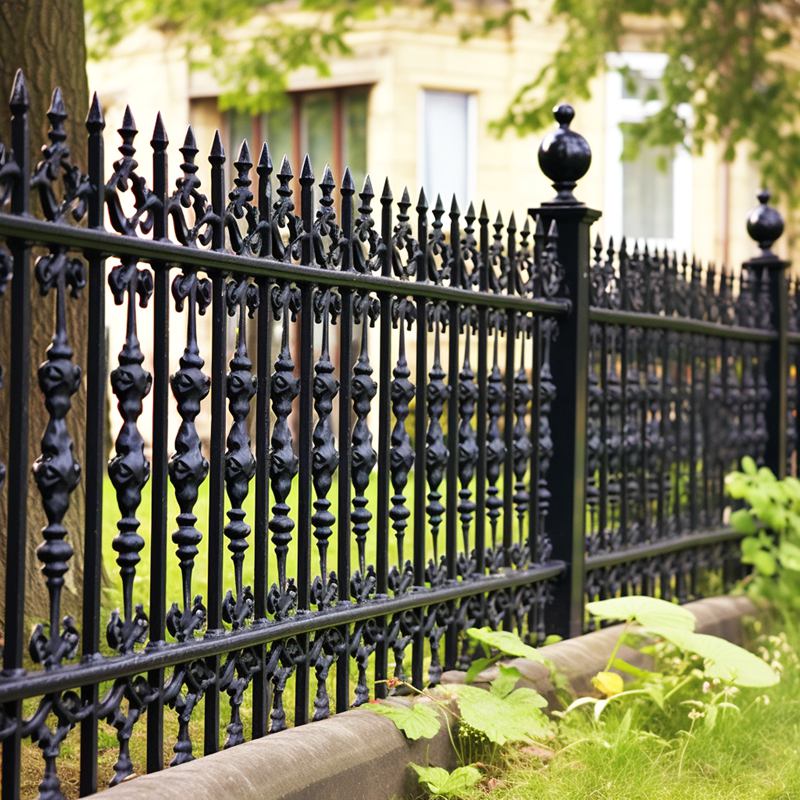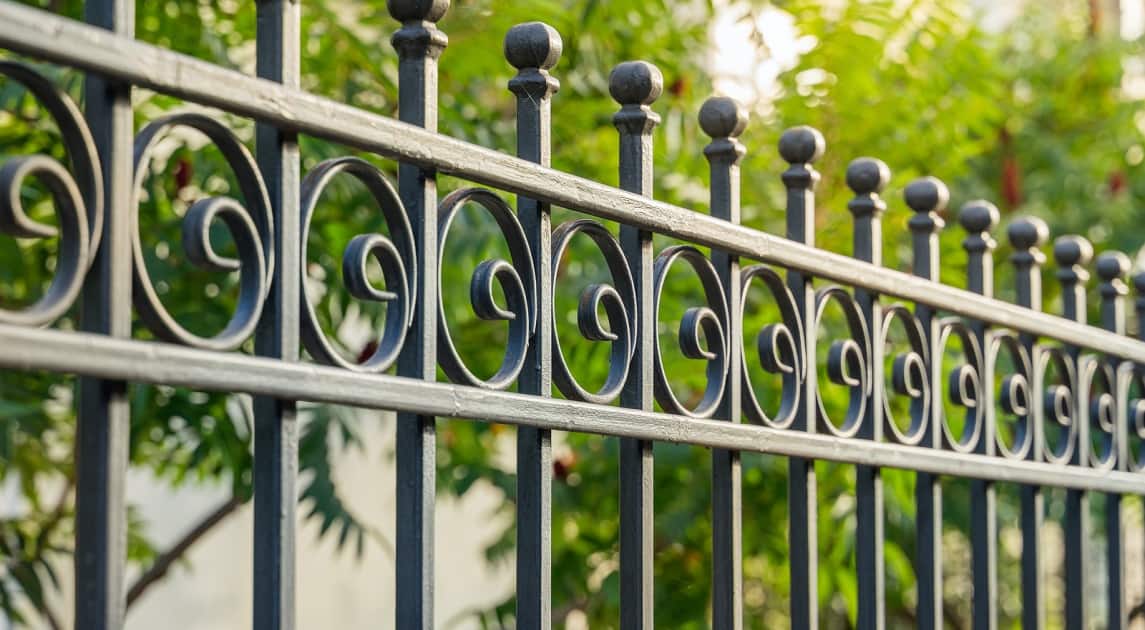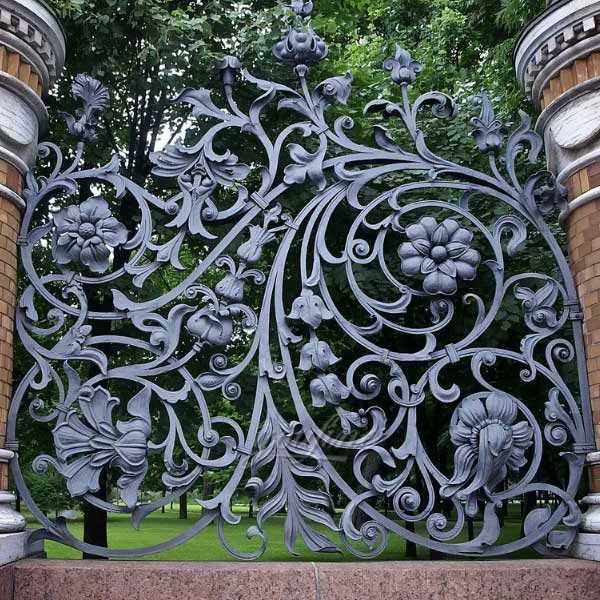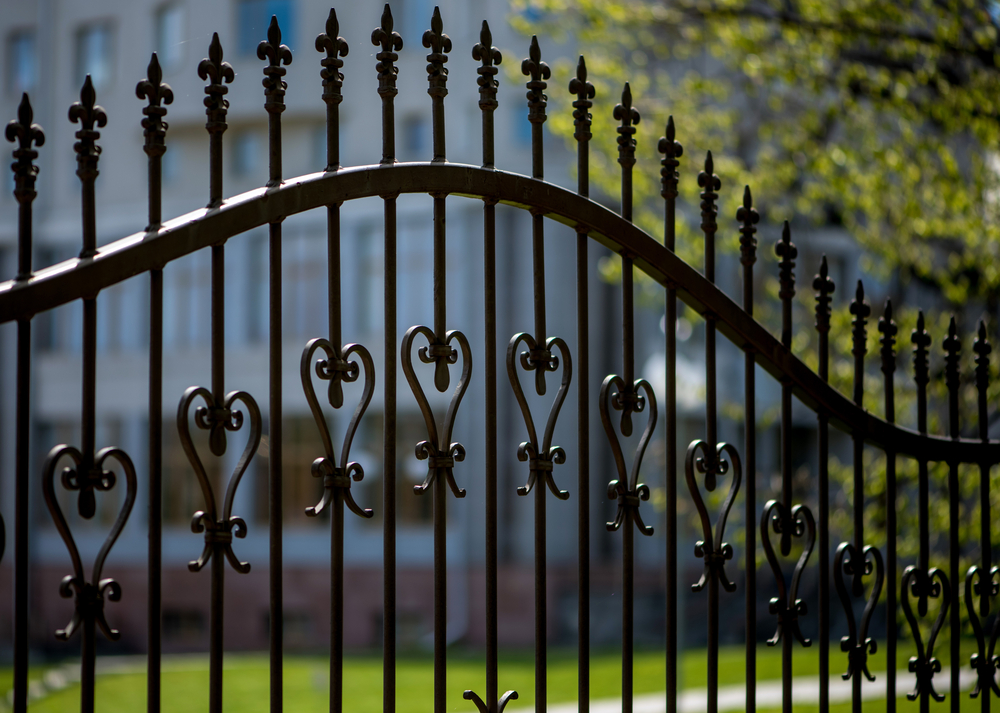When it comes to enhancing the beauty and security of your property, decorative wrought iron fencing stands out as a timeless choice. With its elegant designs and robust construction, wrought iron fencing not only adds value to your home but also offers a myriad of practical benefits. As someone who has personally experienced the transformation wrought iron brings, I’m excited to share my insights and guide you through everything you need to know about decorative wrought iron fencing.
What Is Decorative Wrought Iron Fencing?
Wrought iron fencing is a type of fence made from wrought iron, a material known for its strength and malleability. Decorative variants incorporate intricate designs, patterns, and finishes, allowing you to customize your fencing to match your aesthetic preferences.
History of Wrought Iron Fencing
The roots of wrought iron fencing trace back to ancient times, where it was used for both practical and decorative purposes. Today, it is celebrated for its strength, durability, and artistic potential. From classic Victorian styles to modern minimalist designs, wrought iron fencing has adapted to various architectural trends over the years.
Benefits of Decorative Wrought Iron Fencing
Choosing decorative wrought iron fencing comes with an array of benefits:
1. Aesthetic Appeal
Wrought iron fences are highly customizable, allowing homeowners to select from various styles, colors, and decorative elements. This means you can create a stunning focal point for your property.
2. Durability
Wrought iron is renowned for its strength and longevity, able to withstand harsh weather conditions without deteriorating. This means less frequent replacements and repairs.
3. Security
Its formidable construction serves as an effective barrier against intruders, enhancing the safety of your home.

4. Low Maintenance
Unlike wood fences, which may require regular treatments and painting, wrought iron fencing needs minimal upkeep. A simple annual inspection and occasional paint touch-up is usually all that’s required.
5. Value Addition
Wrought iron fencing can significantly increase your property’s curb appeal and overall value, making it a worthy investment.

Types of Decorative Wrought Iron Fencing
Wrought iron fencing comes in various styles, each offering unique aesthetics and benefits. Here are some popular styles:
1. Picket Fencing
Picket fences are characterized by their evenly spaced vertical slats, which can lend a charming, classic feel to your property.

2. Estate Fencing
This style is grand and often features taller panels, perfect for large estates or properties needing a strong statement.
3. Ornamental Fencing
Ornamental fences feature intricate designs, including curves, scrolls, and elaborate patterns, showcasing artistry along with functionality.

4. Spear-top Fencing
These fences are distinguished by pointed tops, enhancing a sense of security while maintaining an elegant appearance.
Comparison Table: Types of Decorative Wrought Iron Fencing

| Type | Aesthetic | Height | Security Level | Common Uses |
|---|---|---|---|---|
| Picket | Classic, welcoming | 3-4 ft | Low | Residential gardens |
| Estate | Grand, stately | 5-6 ft or taller | High | Large properties |
| Ornamental | Artistic, intricate | 4-6 ft | Medium | Public parks, estates |
| Spear-top | Formal, secure | 4-6 ft | High | Commercial properties |
Choosing the Right Decorative Wrought Iron Fencing
Choosing the correct style and design for your wrought iron fencing can be overwhelming. Here are some factors to consider:

1. Purpose
Consider why you need the fence. Is it for decoration, security, or both? Your answer will guide your design choice.
2. Property Style
Ensure the fence style complements the architectural style of your home. For instance, a Victorian home looks great with ornate fencing, while a modern home might favor sleek, minimalistic designs.

3. Local Regulations
Check with your local zoning laws and homeowner’s association rules to ensure compliance with height and design restrictions.
4. Budget
While wrought iron fencing can be an investment, prices can vary significantly based on design complexity and installation costs, so budget accordingly.
Installation Process for Wrought Iron Fencing
Installing decorative wrought iron fencing involves several steps:
1. Planning and Measurement
Begin by marking where the fence will go and taking precise measurements. This step is crucial for ensuring a proper fit and aesthetic appeal.
2. Choosing Materials
Select the right materials for your project, including the fencing panels, posts, and any decorative elements.
3. Digging Post Holes
Using a post hole digger, create holes for the fence posts. A depth of at least one-third of the post’s length is recommended for stability.
4. Installing the Fence
Secure the posts in the holes using concrete mix for added stability, then attach the fencing panels.
5. Finishing Touches
Once installed, consider adding a protective finish or paint to enhance durability and visual appeal.
Maintenance Tips for Wrought Iron Fencing
To keep your decorative wrought iron fencing looking its best, follow these maintenance tips:
1. Regular Inspections
Check for rust and structural issues at least once a year to catch problems early.
2. Cleaning
Use a mild soap and water solution to clean the fence periodically, removing dirt and debris that can lead to rust.
3. Rust Prevention
If you notice any rust spots, sand them down and apply a rust-inhibiting primer and paint.
4. Repainting
Consider repainting the fence every few years to maintain its appearance and protect the metal.
Cost of Decorative Wrought Iron Fencing
The cost of decorative wrought iron fencing can vary based on several factors, including:
1. Design Complexity
Intricate designs typically cost more due to the labor and materials involved.
2. Height and Length
Taller and longer fences will require more material, impacting the overall cost.
3. Installation
Professional installation can add to the cost, though it ensures a high-quality finish.
Cost Breakdown
Here’s a general cost breakdown:
| Item | Average Cost per Linear Foot |
|---|---|
| Basic Wrought Iron Fence | $24 – $30 |
| Ornamental Wrought Iron Fence | $30 – $45 |
| Custom Design | $45 and up |
| Installation (Professional) | $15 – $25 |
Decorative Wrought Iron Fencing vs. Other Fencing Materials
To help you make an informed decision, here’s a comparison of decorative wrought iron fencing with other popular materials:
Wood Fencing
While wood offers a natural look, it requires regular maintenance and is susceptible to rot and pests.
Vinyl Fencing
Vinyl is low-maintenance and available in various colors, but it may lack the classic elegance of wrought iron.
Chain Link Fencing
Chain link offers security at a lower cost but does not provide the same aesthetic appeal or decorative options as wrought iron.
Comparison Table: Wrought Iron vs. Other Fencing Materials
| Material | Aesthetic Appeal | Durability | Maintenance | Cost |
|---|---|---|---|---|
| Wrought Iron | High | Very High | Low | Medium to High |
| Wood | Natural | Medium | High | Medium |
| Vinyl | Varied | High | Very Low | Medium |
| Chain Link | Low | High | Very Low | Low |
Frequently Asked Questions (FAQs)
1. How long does wrought iron fencing last?
With proper maintenance, wrought iron fencing can last over 50 years, making it a long-term investment for your property.
2. Is wrought iron fencing customizable?
Absolutely! Wrought iron fencing can be custom-designed to match your specific aesthetic preferences, including different heights, styles, and decorative features.
3. Can I install wrought iron fencing myself?
While it’s possible to install your own wrought iron fencing, hiring a professional can ensure a proper installation and save you time and effort.
4. How can I prevent rust on my wrought iron fence?
Regularly inspect for any rust spots and treat them promptly. Additionally, applying a rust-inhibiting primer and paint can help prevent rust from developing.
5. What is the best way to clean wrought iron fencing?
A mixture of mild soap and water works well for cleaning wrought iron fencing. Avoid using abrasive materials that could damage the finish.
6. Is decorative wrought iron fencing safe for pets?
Yes, wrought iron fencing provides a secure boundary for pets, while allowing visibility and airflow. Just ensure the spaces between the bars are appropriate for your pet’s size.
7. Can decorative wrought iron fencing be painted?
Yes, wrought iron can be painted to match your home’s decor or to refresh its appearance. Make sure to use paint designed for metal surfaces for the best results.
Conclusion
Decorative wrought iron fencing combines elegance, security, and durability in a way that few other fencing materials can. Whether you are looking to enhance your home’s curb appeal or safeguard your property, the benefits of choosing wrought iron cannot be overstated. By considering your needs, understanding the various styles available, and keeping up with maintenance, you can enjoy the many advantages of wrought iron fencing for years to come. Embrace the charm of wrought iron and elevate your outdoor space today!